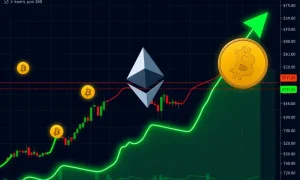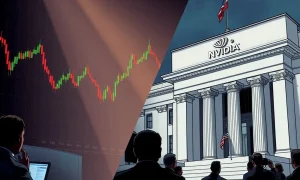As major indices reach unprecedented heights, a profound divergence emerges between Wall Street’s bullish forecasts and Main Street’s cautious apprehension about current stock market conditions.
The Wall Street Confidence Surge
Institutional investors demonstrate remarkable stock market confidence currently. Major investment banks consistently upgrade their projections. Consequently, analysts predict continued growth through 2024. Three key factors drive this optimism:
- Corporate earnings consistently exceed expectations
- Economic indicators show sustained expansion patterns
- Monetary policy appears increasingly favorable for equities
Main Street’s Growing Skepticism
Retail investors express significant concerns despite market gains. Many individual traders question sustainability. Household investors cite several pressing worries:
- Valuation metrics approach historical extremes
- Economic uncertainty affects personal investment decisions
- Market volatility creates hesitation among smaller investors
Analyzing the Confidence Gap
The divergence in stock market confidence reveals deeper market dynamics. Institutional investors access sophisticated tools. Meanwhile, retail investors rely on different information sources. This discrepancy creates contrasting market perspectives. Professional traders emphasize macroeconomic trends. Individual investors focus on personal financial experiences.
Historical Context and Patterns
Market history shows similar confidence divergences. Previous cycles exhibited comparable patterns. However, current conditions present unique characteristics. Technology enables faster information dissemination. Social media amplifies retail investor sentiments. These factors intensify the current confidence gap.
Market Implications and Projections
The confidence gap influences market behavior significantly. Institutional flows continue supporting prices. Retail participation remains selective and cautious. This dynamic affects trading volumes and volatility. Market analysts monitor this divergence closely. Their observations suggest potential market adjustments ahead.
Expert Perspectives on Market Sentiment
Financial experts analyze this confidence dichotomy thoroughly. Many highlight fundamental economic strengths. Others caution about potential market corrections. The consensus acknowledges valid arguments on both sides. Most analysts recommend balanced investment approaches. They emphasize diversification and risk management.
Frequently Asked Questions
Why does Wall Street remain optimistic about stocks?
Wall Street optimism stems from strong corporate earnings, favorable economic data, and expectations of supportive monetary policies from central banks.
What concerns do Main Street investors have?
Main Street investors worry about high valuations, economic uncertainty, inflation pressures, and potential market corrections after extended gains.
How does this confidence gap affect market stability?
The divergence can increase market volatility as institutional and retail investors may move in different directions during market movements.
Should individual investors follow Wall Street’s lead?
Financial advisors typically recommend maintaining diversified portfolios aligned with personal risk tolerance rather than following any single market sentiment.
What indicators should investors watch?
Key indicators include earnings reports, inflation data, Federal Reserve communications, and broader economic growth metrics.
How often do such confidence gaps occur?
Similar divergences between institutional and retail sentiment have occurred during various market cycles, particularly during extended bull markets.








